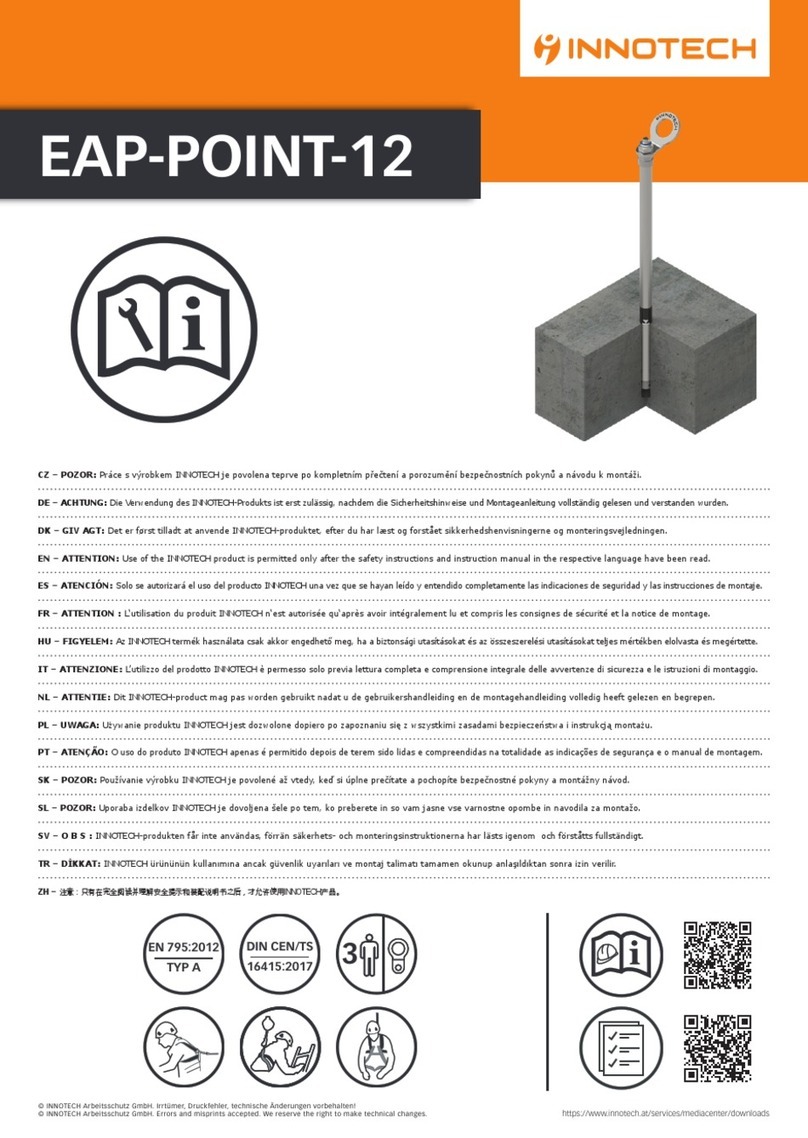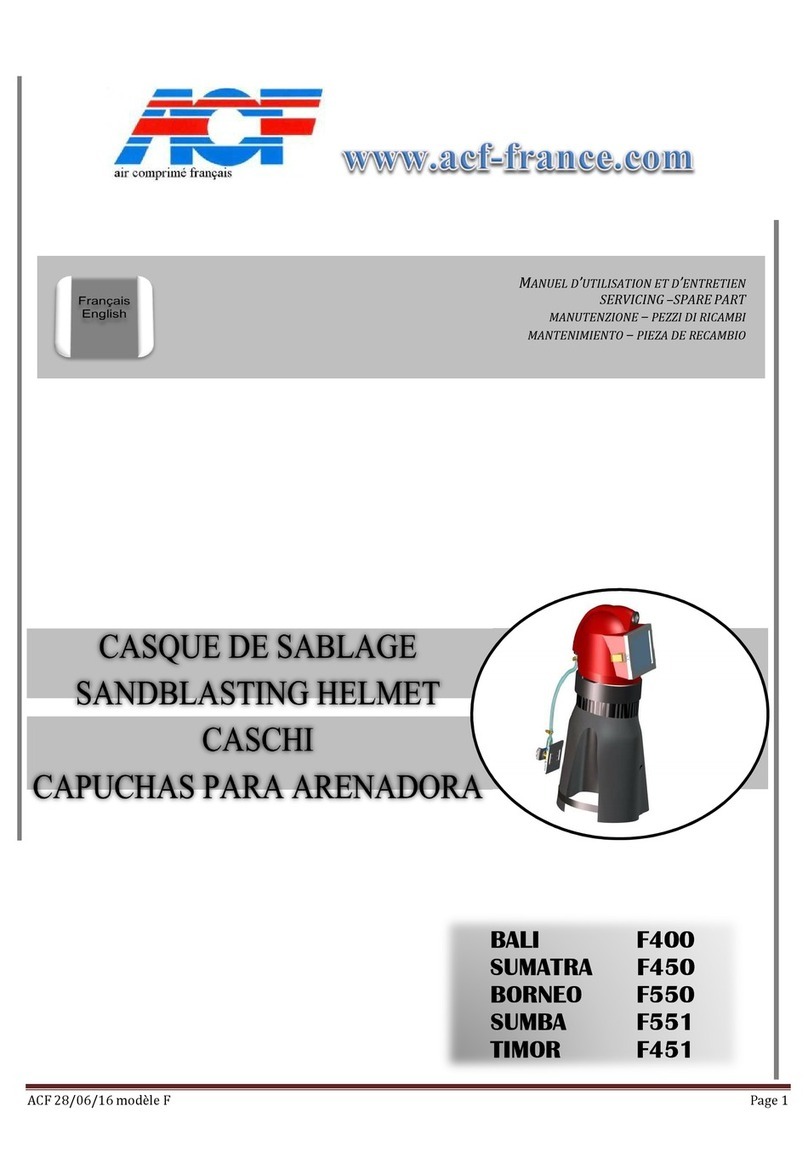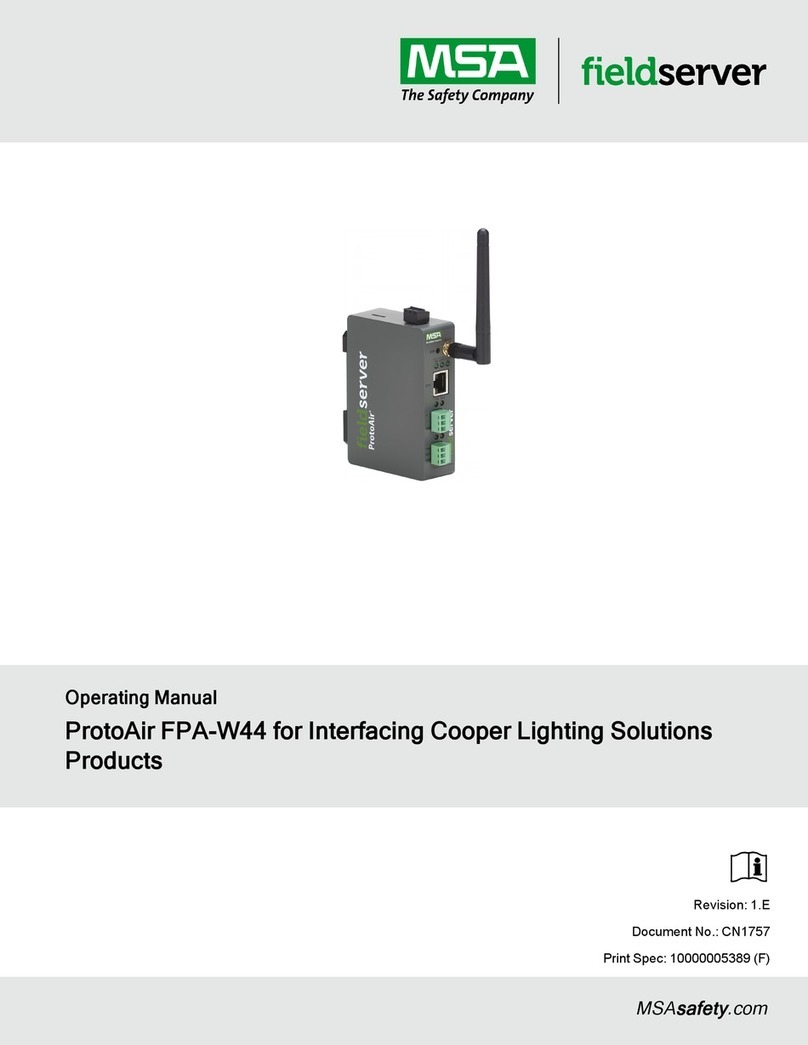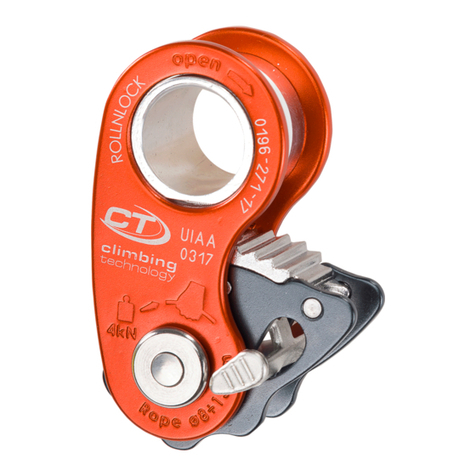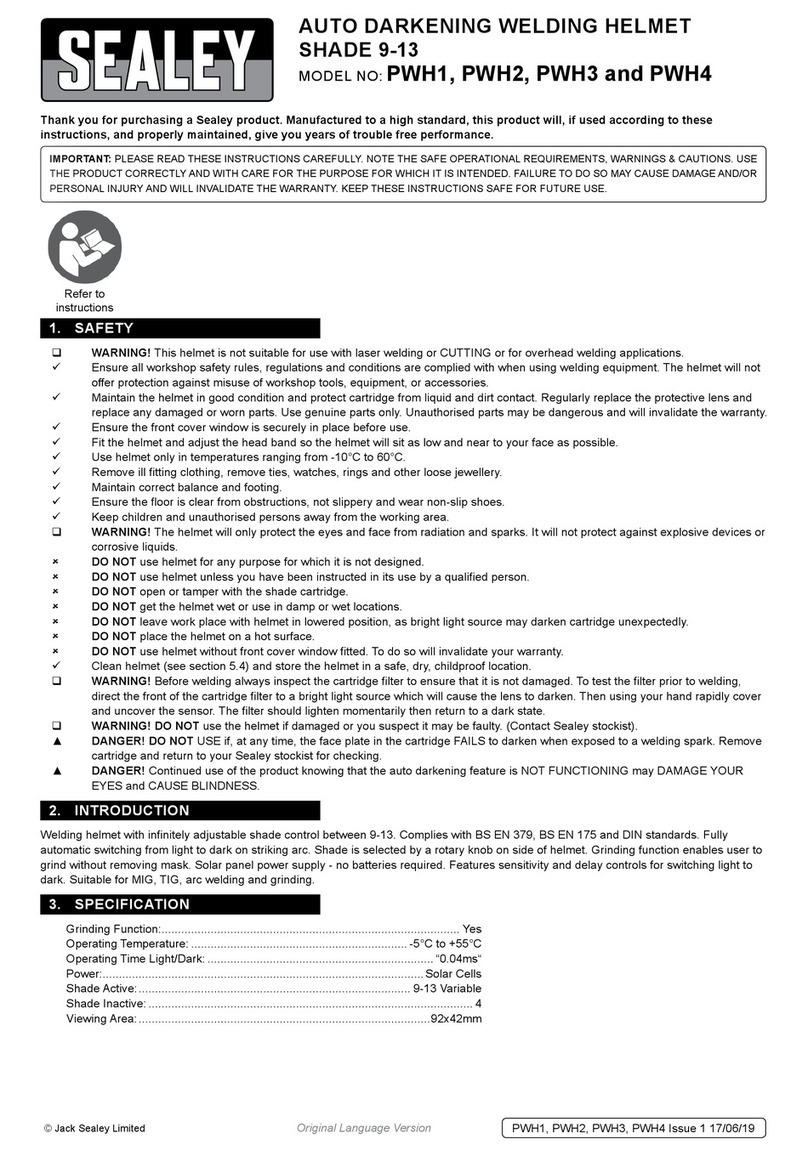Techno GR SB4 Series User manual

SB series User’s manual
SB4 series
(F3S-TGR-SB4 series)
Level 4 infrared safety barriers
SB2 series
(F3S-TGR-SB2 series)
Level 2 infrared safety barriers
USER'S MANUAL
SB series User’s manual
This appliance complies with CE provisions according to the following
directives:
-98/37/EC Machinery Directive
-73/23/EEC Low-Voltage directive resp. 93/68/EEC
-EN 61496-1:1997
-prEN 61496-2:1997
-DIN V VDE 0801:1990 and amendment A1:1994
-EN 50081-2:1993
-EN 55022:1998
-EN 60204-1:1997 (as applicable)
MANUFACTURER: TECHNO-GR s.r.l.
via Torino, 13/15
10046 Poirino (TO) - ITALY
Tel. +39 011 9452041
FAX +39 011 9452090
E-Mail technogr@technogr.com
WWW www.technogr.com
USER’S MANUAL: Version 1.4 dated 22-01-2003

SB series User’s manual
3
INDEX
section page
1 BEFORE USE. ................................................................................. 5
2 GENERAL DATA AND MAIN APPLICATIONS. .............................. 6
3 OPERATION. ................................................................................... 7
4 PRECAUTIONS AND CRITERIA FOR INSTALLATION.................. 8
4.1 CALCULATION OF THE MINIMUM DISTANCE FOR INSTALLATION ................. 8
4.2 REFLECTING SURFACES................................................................................... 10
5 MECHANICAL ASSEMBLY........................................................... 11
6 CONNECTIONS. ............................................................................ 12
6.1 REFERENCES FOR CABLES:............................................................................. 12
6.2 CONNECTIONS WITH TGR-SB RELAY MODULE: ............................................ 13
6.3 NOTES ON CONNECTIONS:............................................................................... 15
6.4 CODES AND SPECIFICATIONS OF AVAILABLE MODELS: .............................. 16
7 ALIGNMENT PROCEDURE........................................................... 18
8 OPERATING PROCEDURES. ....................................................... 19
8.1 SETTING THE INTERNAL DIP-SWITCHES ........................................................ 19
8.1.1 SELECTION OF RESET MODE.................................................................... 19
8.1.2 RELAY MODULE MANAGEMENT................................................................ 19
9 MUTING, OVERRIDE AND FLOATING BLANKING FUNCTIONS 20
9.1 GENERAL INFORMATION ON THE THREE FUNCTIONS................................. 20
9.2 MUTING FUNCTION ............................................................................................ 20
9.3 DESCRIPTION OF SINGLE MODULE MUTING AND MODULAR MUTING....... 21
9.3.1 DEFINITION OF MODULE. ........................................................................... 21
9.3.2 SINGLE MODULE MUTING AND MODULAR MUTING ............................... 22
9.3.3 SELECTION OF MODULAR MUTING MODE (STANDARD) ....................... 22
9.3.4 SELECTION OF SINGLE MODULE MUTING............................................... 22
9.4 CRITERIA FOR INSTALLATION .......................................................................... 23
9.5 TIMING CONSTRAINTS (muting function)........................................................... 26
9.6 OVERRIDE. .......................................................................................................... 27
9.6.1 ENABLING THE OVERRIDE FUNCTION. .................................................... 27
9.7 FLOATING BLANKING......................................................................................... 27
9.7.1 DEFINITION OF FLOATING BLANKING. ..................................................... 27
9.7.2 MEMORISATION PROCEDURE FOR FLOATING BLANKING.................... 28
10 LED DIAGNOSTICS....................................................................... 29
10.1 WHAT THE LEDS MEAN ..................................................................................... 29
10.2 ERRORS SIGNALLED BY LED............................................................................ 30
SB series User’s manual
4
11 FINAL CONTROLS. ....................................................................... 31
12 ROUTINE CONTROLS AND MAINTENANCE............................... 31
13 GENERAL INFORMATION AND USEFUL DATA. ........................ 32
14 TECHNICAL SPECIFICATIONS. ................................................... 33
15 DIMENSIONS................................................................................. 34
16 NOTE: ............................................................................................ 36

SB series User’s manual
5
1 BEFORE USE
x GENERAL INFORMATION
The instructions in this manual must be followed in order to safeguard
correct installation.
The barrier does not contain any parts that are subject to maintenance;
the power supply must be disconnected before proceeding with any
external intervention.
In case of malfunction, it must be sent to our laboratories with a
description of the anomaly found and its period of operation.
Any deterioration in the protective covers does not compromise the
system’s safety in any way but may cause it to stop operating.
x REGULAR MAINTENANCE
No regular maintenance of any kind is required except for the cleaning
of the front covers in polycarbonate that protect the optical units.
Do not use woollen cloths.
Do not use solvents.
The interval between cleaning depends on conditions in the
environment.
Techno-GR declines any liability for damage or injury due to incorrect
use of the appliance.
SB series User’s manual
6
2 GENERAL DATA AND MAIN APPLICATIONS
SB units are safety barriers used for the protection of persons in
environments where it is essential to safeguard the safety of the operator
using machinery, robots or dangerous automated systems in general or
where casual and/or unauthorised access may be gained to hazardous
parts.
These appliances provide coverage of the protected area and generate a
beam of infrared rays, which are able to detect an object located inside
their field of operation.
They comply with the requisites for level 2 (SB2 series), and level 4 (SB4
series) safety appliances according to the provisions of the latest
international regulations and IEC 61496 1-2 in particular.
Models are available that provide an area of protection with heights
approximately between 150 mm and 1650mm.
All the control and command functions are contained inside the profile;
connections are made using a connector underneath the barrier. There are
no connections between the transmitter and the receiver, as synchronism
between the two parts is guaranteed optically. Control and management of
the rays issued and received is guaranteed by two microprocessors that
also provide information on the status of the barrier by means of several
leds. There are two alignment leds to aid installation.
The muting and override function is available for all the SB barrier models
and is enabled by simply connecting the LMS luminous warning light,
supplied separately.
Versions are also available with the floating blanking function: this function
offers the possibility to partially exclude a predetermined floating portion of
the barrier.
Muting, override and floating blanking all effectively override the system
and therefore certain precautions have been put in place to limit the
deterioration of the level of safety when these functions are operational.

SB series User’s manual
7
3 OPERATION
The barrier is made up of one bar with transmitting optical elements and
one with receiving optical elements. The photosensitive elements are
regularly scanned in sequence along all its length so that any objects
placed between the projector and the receiver are detected and the
operation of the equipment being controlled is interrupted by means of the
opening of the outputs, with response times from 14 to 45ms according to
the model. It is complete with leds that display the operating status of the
machinery as well as any anomalies in the reset, test and muting inputs for
the models with this option.
The operator has a multifunction pushbutton, which is used for the
following:
x TEST: if pressed during normal operation, it checks if all the system,
comprising the barrier and the machinery, is efficient. Pressing the
button (opening the contact) basically simulates the interruption of
one or more safety rays and it is possible to check that the
machinery stops in the time and way set.
x RESTART: if pressed after an intervention by the barrier, (manual
reset condition) the system will be reset.
x ALIGNMENT: if the button is pressed when there is no power supply
to the barrier and then power is restored, whilst the button is being
pressed, it enters alignment mode, i.e. it provides an indication of the
centring of the top and bottom optical unit by means of two yellow
leds.
x OVERRIDE: (only present if the muting function is operational) if the
button is pressed within 5 seconds of switching on and it is kept
pressed for at least 5 seconds, the barrier will force the closure of
the outputs only if the rays are interrupted. This condition stops as
soon as the button is released or automatically after 120 seconds.
1. Automatic reset: after the barrier has intervened due to the detection of an
object, it returns to normal operation as soon as the object is removed.
2. Manual reset: normal operating mode is only restored after the object has
been removed and the reset button has been pressed.
To enable the muting function, the LMS muting indicator must be
connected when the barrier is not connected to the power supply, as
shown in section 6, and then the barrier’s power supply must be restored.
To disenable the muting function, the LMS muting indicator must be
disconnected when the barrier is not connected to the power supply,
and then the barrier’s power supply restored.
Please remember that by enabling/disenabling the muting function
the override function is automatically enabled/disenabled.
The outputs are PNP type.
SB series User’s manual
8
Should the load to be controlled have alternating current or require more
than 500mA consumption, the TGR-SB relay module is available: this
converts the static outputs into relay outputs whose operation is directly
tested and controlled by the barrier itself.
4 PRECAUTIONS AND CRITERIA FOR INSTALLATION
The area where the barrier is to be installed must be compatible with the
appliance’s technical specifications. The temperature of the environment,
interference caused by electromagnetic disturbance and sources of light
and such like, should be assessed a priori; please contact the manufacturer
for any information not contained in this manual.
4.1 CALCULATION OF THE MINIMUM DISTANCE FOR INSTALLATION
The safety distance ‘S’ must guarantee that the operator cannot reach the
danger zone before the machinery with the moving parts has stopped. The
formula to calculate the safety distance for multi-ray barriers is as follows:
S = ( K * T ) + C
S = safety distance.
T = T1 + T2
where T1 = machinery’s response time in seconds.
T2 = barrier’s response time in seconds.
K = approach speed of the body to the danger zone:
2000 mm/s for SBx models, 1600mm/s for SBx-K models
C =8*(d-14)mm for SBx models, 850 mm for SBx-K models where d is the
minimum object that can be detected (35mm for SBx and 14mm for SBx-HR)
S= safety distance.
H1 = the bottom optical ray must not have a height above 300 mm .
H2 = the top optical ray must not be below 900 mm .
S
H2
H1

SB series User’s manual
9
In the SBx-K series please note the following table regarding some limitations
on rays height due to the standards.
4 rays 3 rays 2 rays
1st ray height 300 mm 300 mm 400 mm
2nd ray height 600 mm 700 mm 900 mm
3rd ray height 800 mm 1100 mm
4th ray height 1200 mm
If the barriers are installed in a horizontal position, the optical bars must be
installed so that the distance that exists between the danger zone and the
furthest optical ray is equal to the result of the calculation using the previous
formula, but with the following parameters:
T= T1 + T2
where T1 = machinery’s response time in seconds.
T2 = barrier’s response time in seconds.
K = 1600 mm/s (approach speed of the body to the danger zone).
C = 1200 - 0.4 * H.
H = height of the optical rays compared to the floor.
S= safety distance.
H= the optical beam must have a height between 225 mm and 1m.
S
H
SB series User’s manual
10
4.2 REFLECTING SURFACES
Should there be any reflecting surfaces, the distance must be sufficient to
safeguard against passive reflections.
The distance can be calculated with the formula:
A = 0.04366 * L
where ‘A’ and ‘L’ are expressed in mm
Object
TX barRX bar
A
A
2,5q
2,5
Reflecting material
Reflecting material
L
2,5qAReflecting
surface
RX bar
TX bar
object
L
If several barriers are used, care must be taken that each transmitter does
not interfere with the receiver of a nearby barrier; install as follows:

SB series User’s manual
11
RX bar
TX bar TX bar
RX bar
5 MECHANICAL ASSEMBLY
Use the appropriate brackets provided to complete the mechanical
assembly.
The securing brackets for the bars slide in the container’s grooves so that
their ends can be placed at an equal distance from each other.
OK NONO
SB series User’s manual
12
6 CONNECTIONS
6.1 REFERENCES FOR CABLES:
The test connection must always be executed with a N.C. button or
connected to an automatic device, such as a PLC.

SB series User’s manual
13
6.2 CONNECTIONS WITH TGR-SB RELAY MODULE:
SB series User’s manual
14
Following the connection scheme if TGR-SB is connected in presence of
muting activator MSB-L or MSB-T.

SB series User’s manual
15
6.3 NOTES ON CONNECTIONS
x The transformer needed to power the system must comply with
standard EN 60742 (dual isolation), or with equivalent isolation,
e.g. VDE 0551.
x The control unit must be protected with an external fuse, whose
rated breaking current must be 1A.
x The TEST/RESTART button must be located so that the
operator can see the protected area when restarting,testing or
overriding.
x The external illuminated indicator for muting override enabled
must be located so that it can be seen from all sides of
operation.
x Read the section on the muting function and its use before
locating the sensors for the activation of this function.
x Check that the load does not absorb current in excess of 500
mA; in this case a protection device will intervene to limit the
maximum current. If loads with currents in excess of 500mA
and up to 6A alternating current are to be controlled, the TGR-
SB relay module must be connected to the outputs as shown
below.
The test connection must always be executed with a N.C. button or
connected to an automatic device, such as a PLC.
SB series User’s manual
16
6.4 CODES AND SPECIFICATIONS OF AVAILABLE MODELS
The columns with “Number of modules” and “Number of optical units
per module” refer to operating management with muting (see section
9.3).
The following table shows the standard models available in the SBx series,
based on the length of the bars and their operating features:
All models in the SB series guarantee 35 mm resolution.
Models Height
controlled
mm
Total
height
mm
Total
number
of optical
units
Response
time ms
Number
of
modules
Number of
optical
units per
module
SBx-150 150 286 8 14 4 2
SBx-300 300 389 16 14 4 4
SBx-450 450 536 24 16 4 6
SBx-600 600 683 32 16 4 8
SBx-750 750 830 40 18 5 8
SBx-900 900 977 48 20 6 8
SBx-1200 1200 1271 64 22 4 16
SBx-1500 1500 1565 80 24 5 16
SBx-1650 1650 1712 88 26 4 22
The following table shows the standard (1) models available in the SBx-K
series with variable resolution:
Models Height
controlled
mm
Total
height
mm
Total
number
of optical
units
Response
time ms
Number
of
modules
Number of
optical
units per
module
SBx-K-2-500 500 530 2 14 2 1
SBx-K-3-800 800 830 3 14 3 1
SBx-K-4-900 900 930 4 14 4 1
SBx-K-4-1200 1200 1230 4 14 4 1
(1) Protected heights not included in the list of standard models can be
supplied on request.

SB series User’s manual
17
The following table shows the standard models available in the SBx-HR
series, based on the length of bars and their operating features.
All the models in the SBx-HR series guarantee 14 mm resolution.
Models Height
controlled
mm
Total
height
mm
Total
number
of optical
units
Response
time ms
Number
of
modules
Number of
optical units
per module
SBx-HR-150 150 286 21 15 7 3
SBx-HR-300 300 389 42 18 7 6
SBx-HR-450 450 536 63 22 7 9
SBx-HR-600 600 683 84 24 6 14
SBx-HR-750 750 830 105 27 7 15
SBx-HR-900 900 977 126 30 6 21
SBx-HR-1200 1200 1271 168 36 8 21
SBx-HR-1500 1500 1565 210 42 10 21
SBx-HR-1650 1650 1712 231 45 11 21
SB series User’s manual
18
7 ALIGNMENT PROCEDURE
After completing correct mechanical assembly and connections, as
described in the previous sections, the barrier should be aligned as
follows:
x Disconnect the barrier’s power supply.
x Open the test/restart contact.
x Restore the barrier’s power supply.
x Adjust the direction of the barrier by moving the receiver or
transmitter. The 2 yellow leds located on the receiver will both be
lit when the barrier is aligned correctly.
x After aligning the barrier, secure the bolts firmly.
x Disconnect the power supply.
x Restore the barrier’s power supply (with the test contact closed);
it will enter operating mode.
x Complete all the checks described in the final controls and those
required for routine maintenance.

SB series User’s manual
19
8 OPERATING PROCEDURES
8.1 SETTING THE INTERNAL DIP-SWITCHES
x Disconnect the barrier’s power supply and remove the side on the
connector side of the receiver, so that you can reach the two banks
four-way dip-switches located there.
x Use a suitably sized screwdriver to set the dip-switches as per the
required configuration according to the following tables.
8.1.1 SELECTION OF RESET MODE
Single switch number 4 Reset
OFF Manual
ON Automatic
8.1.2 RELAY MODULE MANAGEMENT
Single switch number 3 Function
OFF Disenabled
ON Enabled
VERY IMPORTANT WARNING!!!
In every unit are present two different dip-switch banks and that two
banks must be set in the same way.
The two dip-switches on the receiver side must have the same
configuration.
The configuration of the two, number 3 dip-switches (relay module
management) on the transmitter side must be the same as the
configuration of the two, number 3 dip-switches on the receiver side,
therefore, if you alter these dip-switches on the receiver you must also
alter those on the transmitter by removing the side panel on the
connector side.
If the number “3” dip-switches are not identical, the RX-TX system will
not work.
SB series User’s manual
20
9 MUTING, OVERRIDE AND FLOATING BLANKING
FUNCTIONS
9.1 GENERAL INFORMATION ON THE THREE FUNCTIONS
The muting, override and floating blanking functions enable the
barrier (or a part of it) to be bypassed when it is working for
operational requirements. As required by current standards, the
barrier is provided with inputs for the activation of these functions. It
should however be remembered that these functions basically
override the system and they should therefore be used with due
care.
9.2 MUTING FUNCTION
As mentioned in the introduction, the muting function can be enabled with any
barrier by simply connecting the LMS muting indicator when the barrier is
switched off, as described in section 6.
The presence of this indicator is recognised when the barrier is switched on. If
its presence is detected, the barrier will enable the muting function and if its
presence is not detected the barrier will ignore any request for muting.It is
important to note that if the muting indicator is connected when the
barrier is already connected to the power supply, it will not be
recognised and the muting function will not be enabled. Once enabled, if
the indicator develops a fault or is removed without first disconnecting the
barrier’s power supply, it will signal an error with the muting light, as described
in section 10.
To disenable the muting function, therefore, the barrier’s power supply must
be turned on without the LMS muting indicator connected.
In brief: this function, present on all barriers, is enabled and disenabled by
means of the following simple procedure:
-Disconnect the barrier’s power supply.
-Connect the appropriate LMS and the muting sensors (see sec. 6 )
-Restore the barrier’s power supply.
Bypass the muting function as follows.
-Disconnect the barrier’s power supply.
-Disconnect the LMS device and the muting sensors ( see sec. 6 )
-Restore the barrier’s power supply.

SB series User’s manual
21
9.3 DESCRIPTION OF SINGLE MODULE MUTING AND MODULAR
MUTING
With this series of barriers it is possible to specify single module muting or
modular muting function at the moment of purchase.
There follows a brief description of these two types of muting.
9.3.1 DEFINITION OF MODULE.
Module means a portion of barrier whose size can contain the amount of
optical units per module defined in the table in section 6.
For example, a SBx-600 should be considered as 4 adjacent modules, each
containing 8 optical units for a total of 32 optical units, whereas a SBx-HR-300
should be considered as 7 adjacent modules, each containing 6 optical units
for a total of 42 optical units.
Various configurations can be achieved on request, according to
requirements.
The layout of the modules is illustrated below:
1st module
2n
d
module
3r
d
module
4th module
Um
p
teen module
Connector Connector
SB series User’s manual
22
9.3.2 SINGLE MODULE MUTING AND MODULAR MUTING
Single module muting enables only one module at a time to be made
transparent according to requirements, whereas modular muting makes it
possible to make the sum of two or more modules transparent, until even the
whole barrier has been bypassed.
Should a muting request be made for modules that are not managed when in
single module muting mode (for example bypassing of the 4th module with a
barrier that manages only three), the barrier will remain operational.
Please note that in single module muting is not possible to select the
module containing the optic ray placed in the opposite side opf
connector. In that case the muting function will not work properly.
Should a modular muting request also involve modules that are not managed
(for example muting of modules 1+2+3 with a barrier that manages only two),
the barrier will enter total muting mode
There follow the settings for the various muting modes.
9.3.3 SELECTION OF MODULAR MUTING MODE (STANDARD)
Single switch Modular muting
1° 2°
OFF OFF Muting of all modules (standard total muting)
OFF ON Muting of modules 1+2+3
ON OFF Muting of modules 1+2
ON ON Muting of modules 1
9.3.4 SELECTION OF SINGLE MODULE MUTING
Single switch Muting of single module
1° 2°
OFF OFF Muting of module 1
OFF ON Muting of module 2
ON OFF Muting of module 3
ON ON Muting of module 4
WARNING
In every unit are present two different dip-switch banks and that two
banks must be set in the same way.
x The modular muting function with all modules activated is setted by
factory as default.

SB series User’s manual
23
x The single module muting function must be requested in the
purchase order.
x The single module muting function excludes the modular muting
function.
9.4 CRITERIA FOR INSTALLATION
All the muting sensors must be connected correctly in order to prevent their
incorrect placement from causing undesired requests for muting.
1. The muting sensors must recognise the whole length of the material (i.e.
pallets, vehicles...).
2. The sensors must be arranged so that the material is also recognised if it
has to be lifted for processing.
3. The effect of various transportation speeds in the field of muting on the
overall duration of muting must be taken into account, if any.
4. All the safety photocells and muting sensors must be arranged so that
the previous material clears the last muting sensor before the new
material reaches the first sensors.
Example of installation of protection on a conveyor, which must allow a box to pass
through but not a person. The protection barrier Sis connected to the control panel,
and A1,A2,B1 and B2 are temporarily excluded for the passage of the box via
sensors that enable muting. The contacts for these sensors are controlled on the
receiver unit.
Sensors Aand Bcan be optical, mechanical, proximity sensors, etc., with closed
contact in the presence of the object to be detected.
The following pages show several examples of configurations with the use of
the muting function:
B1
A2
A
1
B2
S
SB series User’s manual
24
Application with two sensors:
A
S
B
d1 = D
Connection of the muting sensors:
Contact with A
Contact with B
24 VDC
MUTE A IN
MUTE B IN
to the SB cable
Direction allowed
Application with four sensors and single direction for introduction of material:
A
1B1
S
A
2B2
d1
Connection of the muting sensors:
Contact with A1
Contact with A2
Contact with B1
Contact with B2
24 VDC
to the SB
cable
MUTE A IN
MUTE B IN
D
L
v
Direction allowed
Application with four sensors and dual direction for introduction of material:
A
1B1
S
B2
A
2
d1
Connection of the muting sensors:
Contact with A1
Contact with A2
Contact with B1
Contact with B2
24 VDC
to the SB
cable
MUTE A IN
MUTE B IN
D
L
Directions allowed

SB series User’s manual
25
Where:
D: minimum distance for the muting sensors to keep the
request operational; depends on the length of the box:
D < L.
d1: maximum distance required for the muting request to be
accepted; depends on the speed of the box:
d
max [cm]= v[m/s] * 3[s] * 100
It is necessary that this distance does not allow both
sensors to be activated and thus muting if a person goes
through by accident.
Supply Cable
Cable to lamp
Mutin
g
cable
RX cable
TX cable
Muting
lamp
Start & Test
buttons
Protect
cables
x The TEST/RESTART button must be located so that the operator
can see the protected area when restarting,testing or overriding.
x The external illuminated indicator for muting override enabled must
be located so that it can be seen from all sides of operation.
x If the muting sensors are installed very close to the barrier, care
must be taken that the receivers of the sensors are mounted on the
transmitter side of the barrier in order to avoid interference.
x The system is protected against the possibility of faults due to
damage to the wires; however we recommend laying the cables for
all connections in order to avoid damage to the connection cables.
SB series User’s manual
26
9.5 TIMING CONSTRAINTS (muting function)
a) The muting request must take place with the correct timing
sequence: the Muting A input must be enabled first and then the
Muting B input. The request for the latter must be made within a
maximum of 3 seconds and not before 30 ms after the enabling of
the Muting A input. Otherwise the muting function will not be
enabled. An incorrect sequence on the muting inputs will have no
result.
b) Muting status can be maintained for an unlimited time according to
requirements, provided the request is maintained.
3 s max
30 ms min
ON
OFFOFF
Muting A
Muting Status
Muting B
Amuting request cannot be made if the barrier outputs are open,
that is to say when the rays have been interrupted.

SB series User’s manual
27
9.6 OVERRIDE
This function makes it possible to procure a condition of total bypass,
should it be necessary to start up the machinery even if one or more
rays have been interrupted by the material. The objective is to free the
protected area from any material that has accumulated in front of the
barrier, for example further to a fault in the machinery’s cycle.
If we imagine a pallet has stopped in front of the protected area, it will
not be possible to restart the conveyor belt because the barrier detects
one or more rays have been interrupted and therefore will not close the
outputs; therefore the area controlled cannot be liberated.
However, it can be liberated if the override function is enabled.
This function is active for all barriers with the LMS connected, as
described in section 3.
9.6.1 ENABLING THE OVERRIDE FUNCTION
x Switch the appliance off.
x Switch it on again and press the test/restart button within 5
seconds, keeping it pressed for at least 5 seconds.
x The override function is now enabled. The LMS flashes to signal
the exclusion of the barrier.
x The maximum duration of the override function is 120 seconds,
after which the barrier is restored, even if the button is kept
pressed. Naturally, if the button is released before this, the
override function will terminate immediately.
9.7 FLOATING BLANKING
9.7.1 DEFINITION OF FLOATING BLANKING
Floating Blanking means the permanent masking of a certain number of
optical units in a set part of the sensitive area of the barrier. The maximum
quantity of optical units that can be masked depends on the total number of
the optical units in the system.
This cannot be more than 30% of the total number of optical units; however
if 30% corresponds to more than 20 optical units, the system will cap the
number of optical units at its maximum number of 20.
The following examples can help to understand:
Example 1: total optic rays: = 102
optic useful for blanking= 31
The zone can be higher than 20ray, but the unit can only mask 20 rays!!!
SB series User’s manual
28
Example 2: total optic rays: =24
Optic useful for blanking = 7
The maximum maskable zone is 7 rays.
9.7.2 MEMORISATION PROCEDURE FOR FLOATING BLANKING
The object is memorised as follows:
1. Switch the barrier off.
2. Put the object for floating-blanking into place.
3. Connect the MUTING A input to 24Vdc. The TEST/RESTART contact
must be closed.
4. Restore the barrier’s power supply.
5. Now supply the MUTING B input with 24Vdc.
6. The barrier signals successful memorisation of the object by the
flashing of the LOWER led which thus confirms acceptance of
floating-blanking. If the led does not flash at this point, it means that
the object takes up an amount of optical units which is above 30% of
those physically present; it should however be remembered that the
maximum limit is 20 optical units.
7. Now disconnect the two MUTING A and MUTING B wires from
+24Vdc.
8. The barrier works normally and signals the floating-blanking operation
by the flashing of the yellow LOWER led on the receiver.
PLEASE NOTE:
The last optical unit opposite to the connector side cannot be used with the
floating-blanking function, as it is the optical unit for the synchronism between
the two barriers.
If floating-blanking memorisation was completed without the object, and thus
with the rays free, the LOWER led will not flash at the end of the process as
the entire bar is operational: this is a simple way to reset the floating-blanking
function.
If the object memorised, for any reason, is removed or occupies a lesser
number of optical units than in the memorisation process, the barrier will
signal the anomaly and the outputs will be de-energized. The LOWER (yellow)
led and BREAK (red) leds will flash to indicate this particular status. It is
possible to exit this error status by pressing the TEST/RESTART button
provided the object has been restored.

SB series User’s manual
29
10 LED DIAGNOSTICS
10.1 WHAT THE LEDS MEAN
The operator is able to recognise the operating status of the barrier by
means of five leds located on the receiver and two leds on the
transmitter.
The status of the leds on the receiver indicates the following:
(looking at the front of the receiver from right to left)
x UP. ALIGN (Yellow):
when lit, this indicates the alignment of the optical unit located
towards the top section of the barrier. (When the barrier is in
alignment mode; in normal working conditions it is not lit and will only
light up after the barrier has intervened with free rays in manual
reset mode)
x BREAK (Red):
when lit, this indicates that the barrier has intercepted an object; the
outputs are open in this condition.
x GUARD (Green):
when lit, this indicates that there are no objects placed between the
barriers.
x LO. ALIGN (Yellow):
when lit, this indicates alignment of the optical unit positioned
towards the bottom of the barrier (connector side) with the barrier in
alignment mode. If this led lights up in normal working conditions,
this indicates that dust is present on the front of the barrier. If it
flashes, there is a short circuit on the outputs.
x POWER (Green):
when lit, this indicates that the receiver is powered.
The leds placed on the transmitter indicate the following:
x POWER (Green):
when lit, this indicates that the projector is powered
x STATUS OK (Yellow):
when lit but not flashing, this indicates that the projector is working;
if it flashes or if it is off, this indicates a projector fault.
SB series User’s manual
30
10.2 ERRORS SIGNALLED BY LED
If critical errors are detected during hw/sw tests, the leds present indicate
the fault found. The errors signalled are as follows:
RECEIVER
x Only the green power led is lit: system power supply is too low.
x POWER(green) led lit and LO.ALIGN (yellow) led flashing: optical system
fault.
x POWER(green) led lit and UP. and LO.ALIGN (yellow) leds flashing:
micro controller fault.
x POWER (green) led, UP. and LO.ALIGN (yellow) leds and BREAK (red)
led flashing: output system fault.
x POWER (green) led, UP. and LO. ALIGN (yellow) leds and GUARD
(green) led flashing: muting lamp connection fault.
x POWER (green) led, UP. and LO.ALIGN (yellow) leds, GUARD (green)
led BREAK (red) led flashing: relay module connection fault.
TRANSMITTER
x Only the POWER(green) led is lit: system power supply is too low.
x POWER(green) led lit and STATUS OK (yellow) led flashing: optical
system fault or micro controller fault.

SB series User’s manual
31
11 FINAL CONTROLS
Control that the area protected by the barrier is free of obstacles; check
that the safety outputs open correctly by interrupting the protection rays
(BREAK led lit, machinery under control stops).
12 ROUTINE CONTROLS AND MAINTENANCE
There follows the list of recommended controls that should be carried out
on a regular basis by qualified personnel:
x Check that the barrier remains blocked by inserting an object that
intercepts the rays along the entire length of the protected area.
x Check via the opening of the TEST/RESTART contact, that the
safety relays open (red led lit and controller machinery stopped).
x Check that it is not possible to access the danger areas of the
machinery from any area that is not protected and that the
minimum distance between the dangerous areas and the barrier is
no less than that calculated as per formulas 4.1 and 4.2.)
x Check that it is not possible for a person to get between the barrier
and the dangerous parts of the machinery.
x Check that there is no external damage to the barrier and/or to the
external electrical connections.
The interval between the above actions depends on the individual
application and the conditions in the environment where the barrier is used.
SB series User’s manual
32
13 GENERAL INFORMATION AND USEFUL DATA
Everyone MUST be aware of issues regarding safety.
Safety devices are only useful if they are installed correctly according to
the recommendations set down by regulations.
If you are not sure that you are able to install safety devices correctly, you
should contact our service department or have them installed by a
professional.
This appliance is covered by a total warranty for 12 months from the date
of its delivery.
Faults that were clearly caused by damage due to incorrect use, accidental
circumstances or catastrophic events are not covered by the guarantee.
In case of faults, please send the barrier to:
TECHNO-GR
via Torino, 13/15
10046 Poirino (TO) - ITALY
Tel. +39 011 9452041
FAX. +39 011 9452090
A description of the fault found and the period of use must always
accompany the appliance.

SB series User’s manual
33
14 TECHNICAL SPECIFICATIONS
x Power supply: 24 Vdc r20%.
x Consumption: 10W max (with both TX and RX connected).
x Emission: infrared Leds.
x Reception: Photodiode.
x Number of emitters/receivers: according to model (see table in section
6.4).
x Wavelength of emitters: 950 nm.
x RX indicators: - 2 green leds
-2 yellow leds
-1 red led
x TX indicators: - 1 green led
- 1 yellow led
x Response time: according to model (see table in section 6.4).
x Resolution: 35 mm for SBx models.
14 mm for SBx-HR.
Variable for SBx-K models according to amount of rays
and height protected.
x Operating temperature: -10 to + 55 °C.
x Humidity: 15% to 95% (non condensing).
x Safety outputs: Two 500mA PNP outputs protected against short
circuit.
x Operating distance: SBx: 0.2-15m SBxHR 0.2-6m SBx-K 0.5-40 m
x External controls: start/test/override button, muting inputs
x RX connector: M12 8-pin + insulation
x TX connector: M12 5-pin + insulation
x Metal housing (aluminium) painted yellow (Ral 1303 F14).
x Grade of protection: IP 65.
x Muting indicator: LMS
SB series User’s manual
34
15 DIMENSIONS
All dimensions are shown in millimeters

SB series User’s manual
35
SB series User’s manual
36
16 NOTE:
Distributed by:
OMRON Europe B.V.
Wegalaan 67-69
2132JD Hoofdorp
The Netherlands
Sensor Business Unit
Carl-Benz-Str. 4
D-71154 Nufringen
Germany
Tel: +49 7032 811 0
Faxl: +49 7032 811 199
This manual suits for next models
47
Table of contents
Other Techno GR Safety Equipment manuals
Popular Safety Equipment manuals by other brands

Eller
Eller P-03S manual

Jula
Jula 906-002 operating instructions
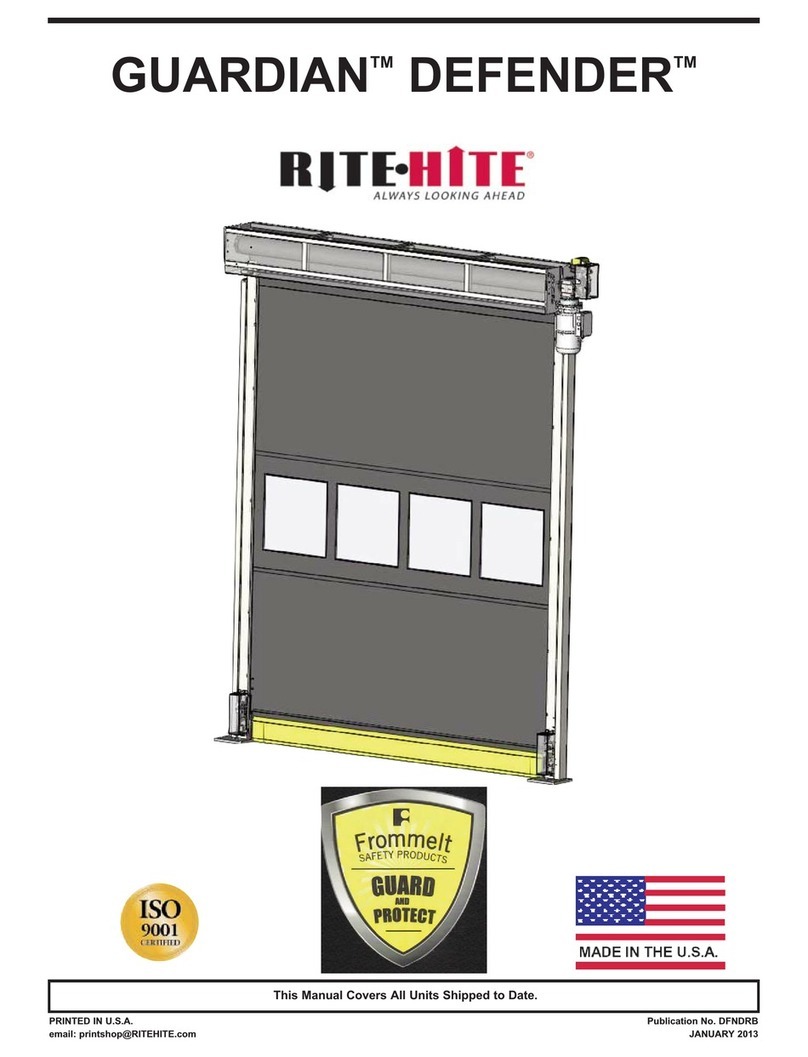
RITE-HITE
RITE-HITE FROMMELT SAFETY PRODUCTS GUARDIAN DEFENDER manual
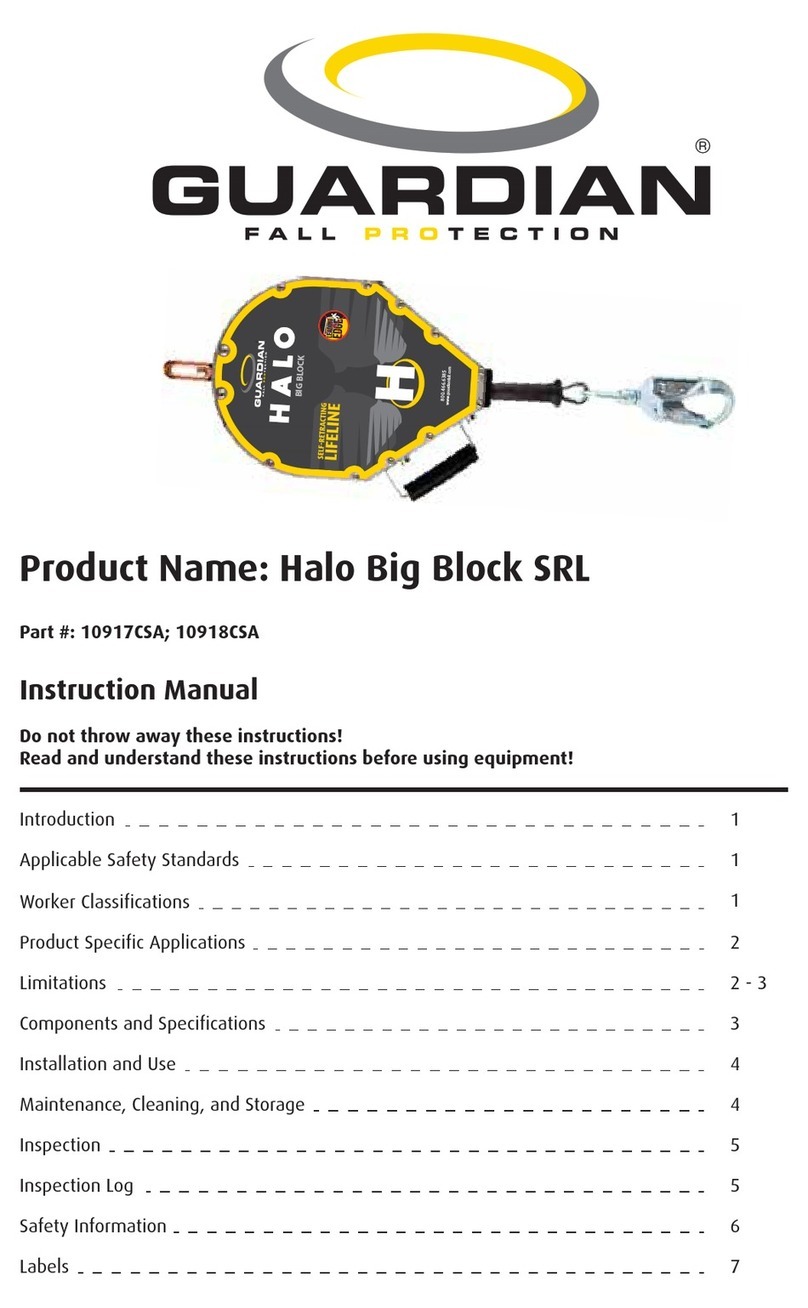
Guardian
Guardian Halo Big Block SRL instruction manual

RocwooD
RocwooD 02631 User instruction
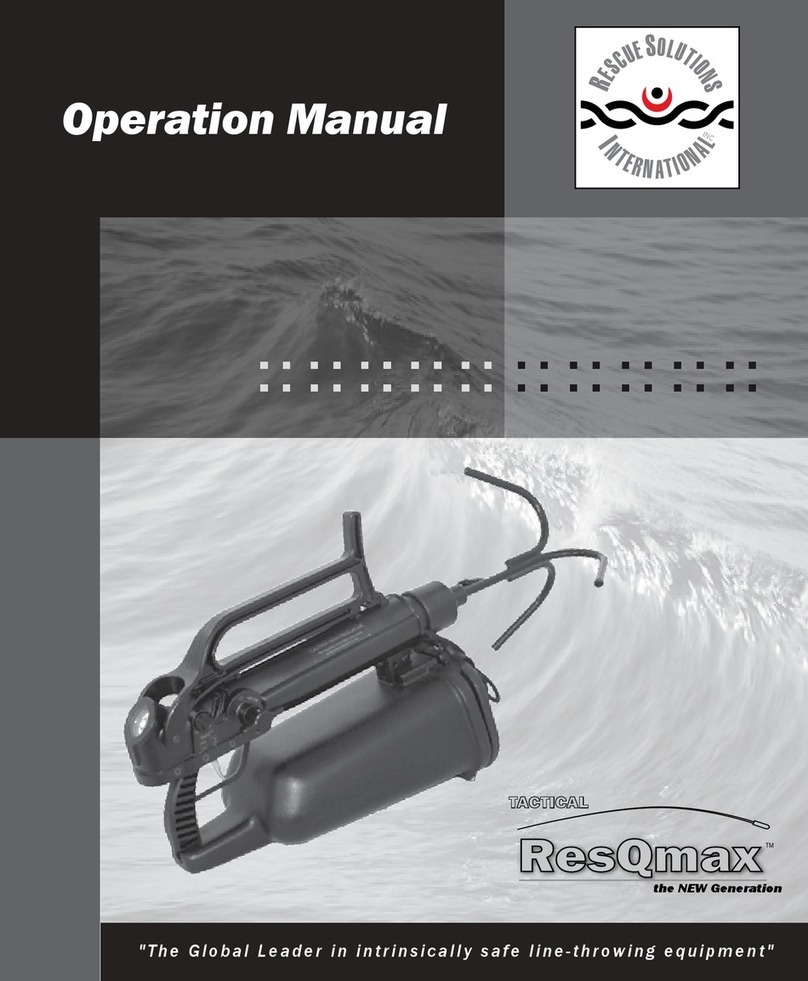
Rescue Solutions International
Rescue Solutions International Tactical ResQmax Operation manual
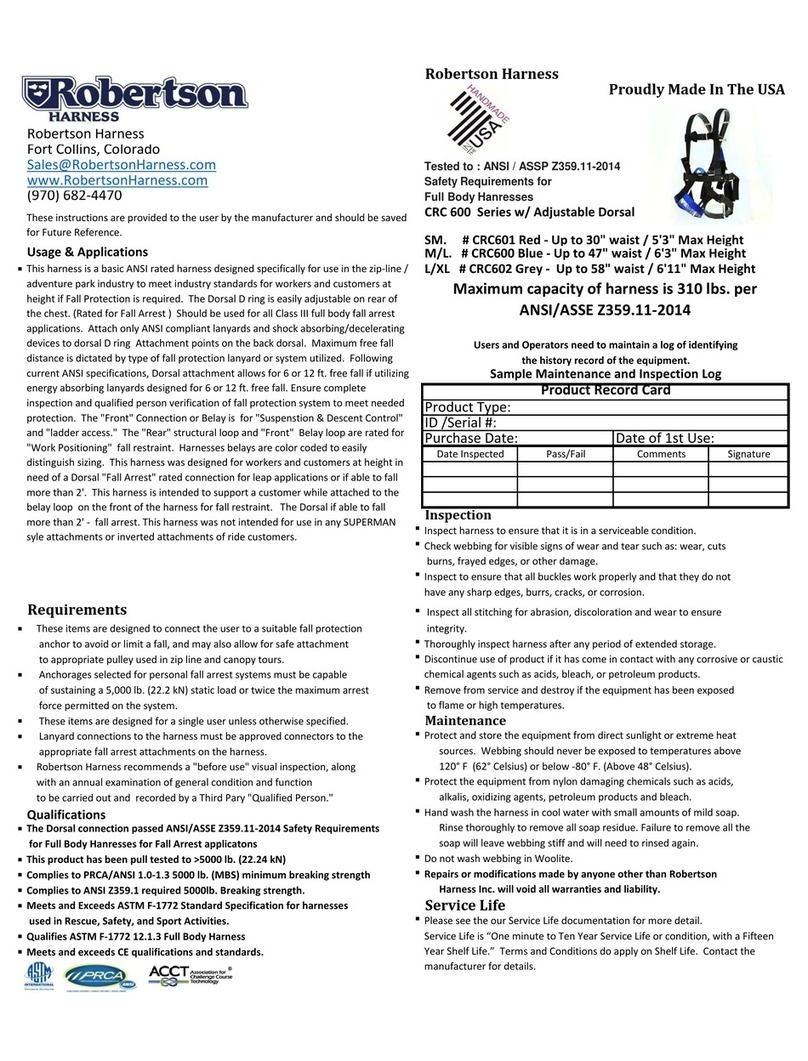
Robertson Harness
Robertson Harness CRC 600 Series manual

ROCK
ROCK P-453 H user guide

Paratec
Paratec NeXt Wingman manual
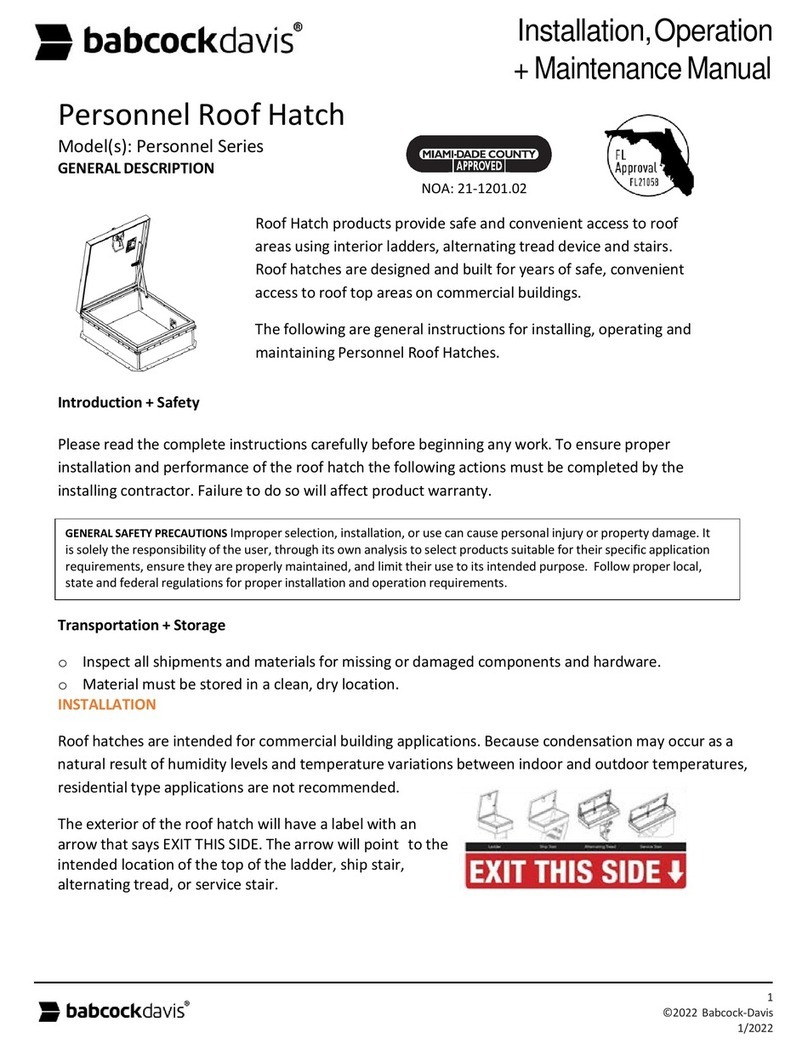
babcockdavis
babcockdavis Personnel Series Installation, operation and maintenance manual
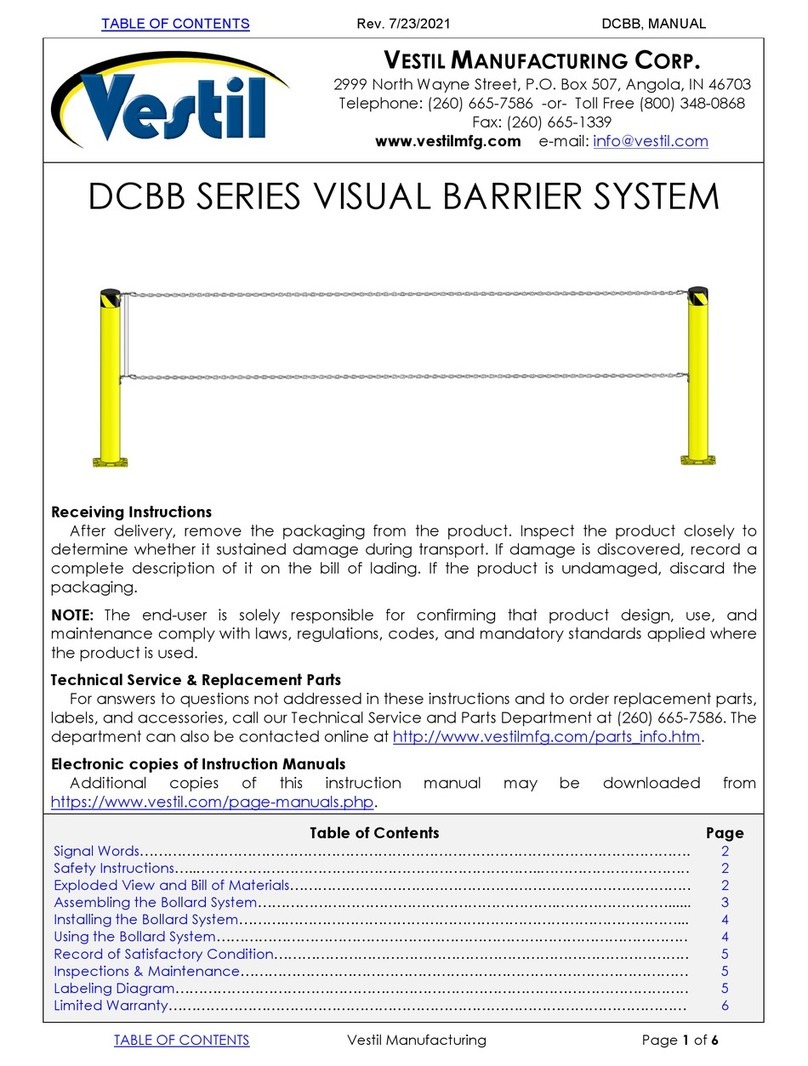
Vestil
Vestil DCBB Series quick start guide

Mittelmann
Mittelmann RsqTec TURTLE Instructions for use

